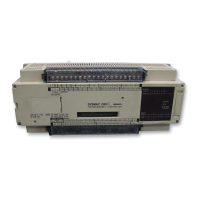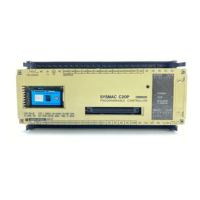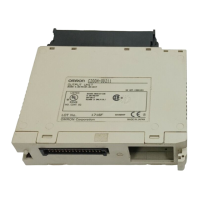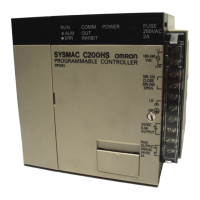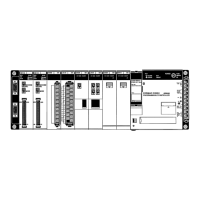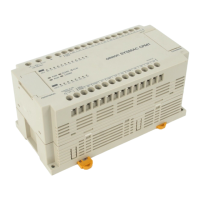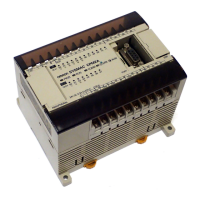77
5-6-3 KEEP – KEEP(11)
B: Bit
IR, HR
Ladder Symbol Operand Data Areas
S
R
KEEP(11)
B
KEEP(11) is used to maintain the status of the designated bit based on two
execution conditions. These execution conditions are labeled S and R. S is
the set input; R, the reset input. KEEP(11) operates like a latching relay that
is set by S and reset by R.
When S turns ON, the designated bit will go ON and stay ON until reset, re-
gardless of whether S stays ON or goes OFF. When R turns ON, the desig-
nated bit will go OFF and stay OFF until reset, regardless of whether R stays
ON or goes OFF. The relationship between execution conditions and
KEEP(11) bit status is shown below.
S execution condition
R execution condition
Status of B
Notice
that KEEP(1
1) operates like a self-maintaining bit. The following two
diagrams would function identically, though the one using KEEP(11) requires
one less instruction to program and would maintain status even in an inter-
locked program section.
0002 0003
0500
0500
Address Instruction Operands
Address Instruction Operands
0000 LD 0002
0001 OR 0500
0002 AND NOT 0003
0003 OUT 0500
0000 LD 0002
0001 LD 0003
0002 KEEP(11) 0500
S
R
KEEP(11)
0500
0002
0003
There are no flags affected by this instruction.
Description
Flags
Bit Control Instructions Section 5-6

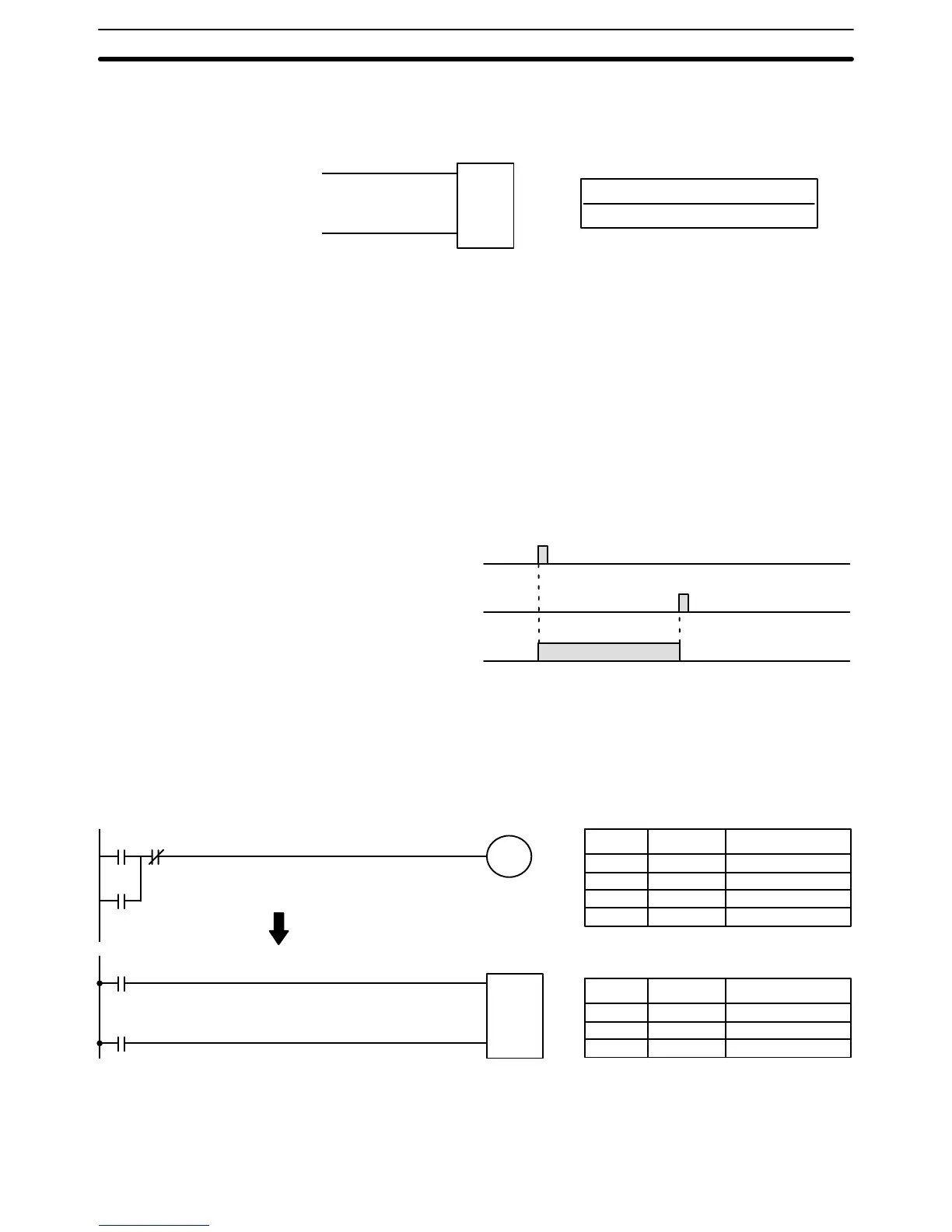